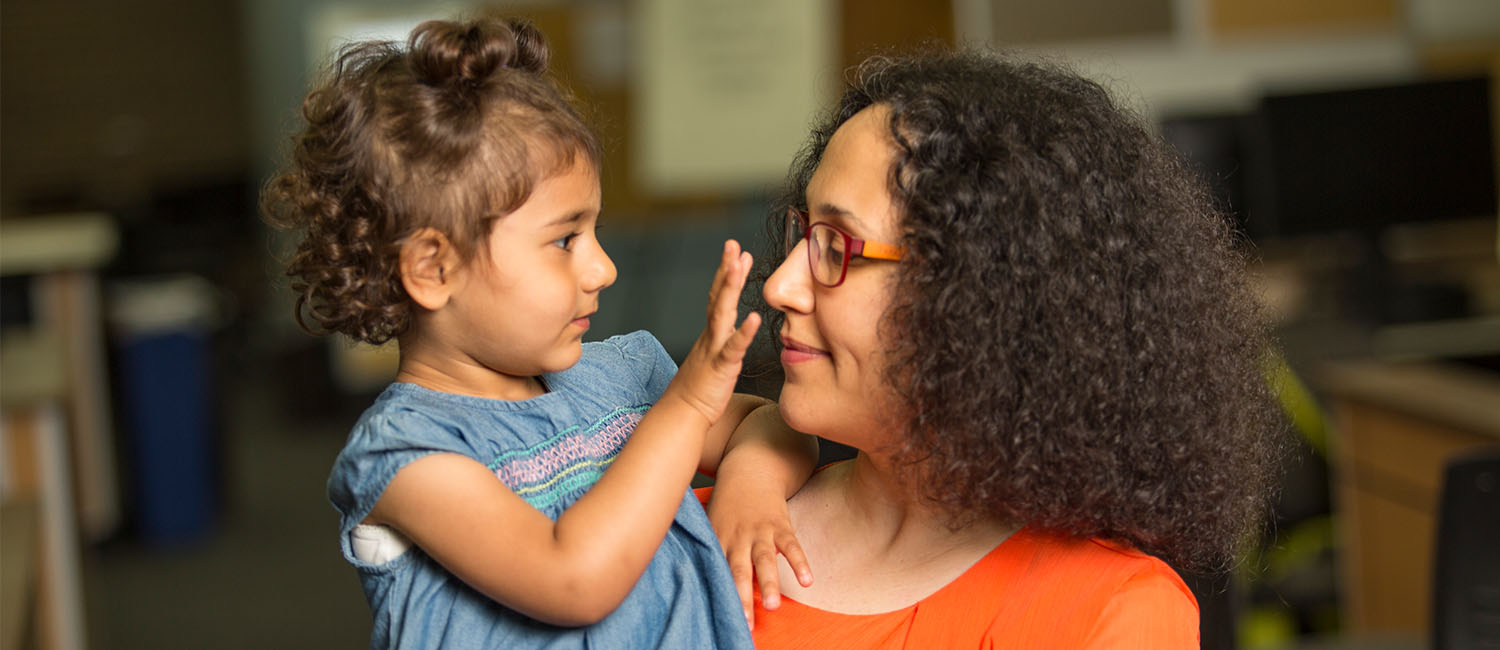
Getting computers to know your face
Reihaneh Rostami’s 2-year-old daughter recognizes her mother instantly, even when Mom is wearing sunglasses. Rostami’s research aims to teach computers to distinguish individual human faces just as accurately.
It’s a tall order, says the computer science doctoral candidate, because computer programs must account for so many variables. Factors such as emotion, gender and race could all foil the outcome.
“You get so happy about it because it feels like you’re training a human.”
Despite the proliferation of facial recognition programs, such as the one Facebook uses to tag your photos, none can replace the ability of human detection. “For some applications, you need 100 percent accuracy,” says Rostami, who’s working under the guidance of Zeyun Yu, associate professor of computer science. “So there is a long way to go.”
To move things forward, her research focuses on blending the most successful aspects of two different computer recognition strategies while building a public database that will help future software solutions get it right.
The first recognition strategy involves extracting each facial feature, or landmark, and writing descriptive code for it. Once that’s done, programmers provide that knowledge to the recognition system. The entire process is time-consuming and difficult.
In the second strategy, the computer teaches itself exact facial features by using a machine-learning algorithm, a process of matching a face to an existing pool of images of that same face. As this is happening, Rostami provides samples of correct information and tags poor performance so the computer corrects itself over and over.
In that approach, however, the program is only as good as the database of existing images. Even something as simple as a smile can trip up a computer that’s been trained on faces with neutral expressions.
Another obstacle involves creating large databases of 3D images, which programs use to create a “morphable model” that can account for weight change or aging. “To train the system, it has to be exposed to diverse 3D data,” Rostami says. “And enough databases just don’t exist yet.”
Because Rostami’s current work happens to focus on recognizing the faces of Chinese men, she’s creating a database of 3D faces appropriate to that race and gender. She hopes it will someday serve as a valuable resource for other researchers, in the same vein that databases involving other race and gender variables will advance broader recognition efforts.
Rostami says the blended strategy is delivering promising results, while reiterating that fully accurate recognition is far down the road. Still, she finds herself cheering at the algorithm’s successes, much in the way she would at her toddler’s.
“You get so happy about it,” Rostami says, “because it feels like you’re training a human.”